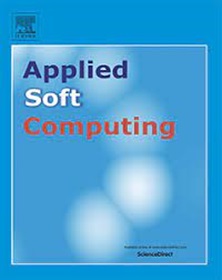Deep reinforcement learning for optimal firebreak placement in forest fire prevention
IF 7.2
1区 计算机科学
Q1 COMPUTER SCIENCE, ARTIFICIAL INTELLIGENCE
引用次数: 0
Abstract
The increasing frequency and intensity of large wildfires have become a significant natural hazard, requiring the development of advanced decision-support tools for resilient landscape design. Existing methods, such as Mixed Integer Programming and Stochastic Optimization, while effective, are computationally demanding. In this study, we introduce a novel Deep Reinforcement Learning (DRL) methodology to optimize the strategic placement of firebreaks across diverse landscapes. We employ Deep Q-Learning, Double Deep Q-Learning, and Dueling Double Deep Q-Learning, integrated with the Cell2Fire fire spread simulator and Convolutional Neural Networks. Our DRL agent successfully learns optimal firebreak locations, demonstrating superior performance compared to heuristics, especially after incorporating a pre-training loop. This improvement ranges between 1.59%–1.7% with respect to the heuristic, depending on the size of the instance, and 4.79%–6.81% when compared to a random solution. Our results highlight the potential of DRL for fire prevention, showing convergence with favorable results in cases as large as 40 × 40 cells. This study represents a pioneering application of reinforcement learning to fire prevention and landscape management.
基于深度强化学习的森林防火防火墙布局优化
大型野火发生的频率和强度不断增加,已经成为一种重大的自然灾害,需要开发先进的决策支持工具来进行弹性景观设计。现有的方法,如混合整数规划和随机优化,虽然有效,但计算量很大。在本研究中,我们引入了一种新颖的深度强化学习(DRL)方法来优化不同景观中防火墙的战略布局。我们采用深度q -学习、双深度q -学习和Dueling双深度q -学习,并集成了Cell2Fire火灾蔓延模拟器和卷积神经网络。我们的DRL代理成功地学习了最佳防火线位置,与启发式算法相比,表现出了卓越的性能,特别是在结合了预训练循环之后。根据实例的大小,启发式的改进幅度在1.59%-1.7%之间,与随机解决方案相比,改进幅度在4.79%-6.81%之间。我们的研究结果强调了DRL在防火方面的潜力,在40 × 40单元格的情况下显示出良好的收敛效果。这项研究代表了强化学习在防火和景观管理方面的开创性应用。
本文章由计算机程序翻译,如有差异,请以英文原文为准。
求助全文
约1分钟内获得全文
求助全文
来源期刊

Applied Soft Computing
工程技术-计算机:跨学科应用
CiteScore
15.80
自引率
6.90%
发文量
874
审稿时长
10.9 months
期刊介绍:
Applied Soft Computing is an international journal promoting an integrated view of soft computing to solve real life problems.The focus is to publish the highest quality research in application and convergence of the areas of Fuzzy Logic, Neural Networks, Evolutionary Computing, Rough Sets and other similar techniques to address real world complexities.
Applied Soft Computing is a rolling publication: articles are published as soon as the editor-in-chief has accepted them. Therefore, the web site will continuously be updated with new articles and the publication time will be short.
 求助内容:
求助内容: 应助结果提醒方式:
应助结果提醒方式:


